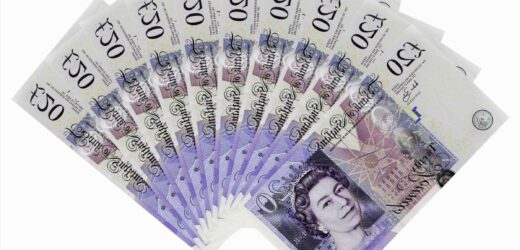BRITS have just one year left to use their old £20 and £50 paper notes as the deadline to spend or put the cash into your bank looms.
New polymer £20 and £50 notes were released into circulation from February this year, which are replacing the old paper ones.
They have been designed to last longer – and they're also more environmentally friendly.
They are even said to be able to survive a spin in the washing machine if you forget to empty your pockets.
The new £20 note features the face of artist JMW Turner, who is famous for his colourful landscape paintings and has the contemporary Turner art prize is named after him.
While the new £50 note features codebreaker and mathematician Alan Turing, who helped to break the German Enigma code enabling the allies to listen to German communications.
The old paper notes will expire on September 30, 2022.
According to the Bank of England, there are roughly £9billion worth of £20 paper notes, and £15billion worth of £50 notes still in circulation.
It has urged Brits to either spend the notes or deposit them at their bank or Post Office sooner rather than later before the deadline hits.
After the notes expire, you won't be able to use them in stores.
Bank of England chief cashier Sarah John said: "The polymer £20 featuring the artist J.M.W. Turner, and the polymer £50 featuring the scientist Alan Turing are now in wide circulation, and we are in the process of withdrawing their paper equivalents.
"So we want to remind the public that they have one year from today to spend their paper banknotes.”
But don't panic – if you miss the September 30 2022 deadline, you can still deposit the notes into your bank account after this point.
The Post Office will also still accept them, so you can exchange them there.
If you don’t want to do that, you can post your notes to the Bank of England, and they will send you new polymer ones back.
You can also visit the Bank of England in person to make the exchange.
If you pocket one of the new £50 or £20 notes, you might want to check if it's a rare one – which could mean it's worth much more than its face value.
When new notes are launched, collectors start hunting for rare or early serial numbers, which can make notes extremely valuable.
For example, banknotes that have very early serial numbers are often sought after by collectors.
This is because not many of them tend to make it into circulation.
Notes with consecutive serial numbers can also catch a collector's eye, particularly if the numbers are low.
Here's the most rare and valuable 50p coins in circulation including the Kew Gardens 50p worth up to £707.
Error coins are also high in demand among collectors, and this £2 with a minting mistake on it sold for £138.
A rare HG Wells £2 error coin could be worth up to £1,000 according to experts – here's how to spot if you have one.
We pay for your stories!
Do you have a story for The Sun Online Money team?
Email us at [email protected]
Source: Read Full Article



